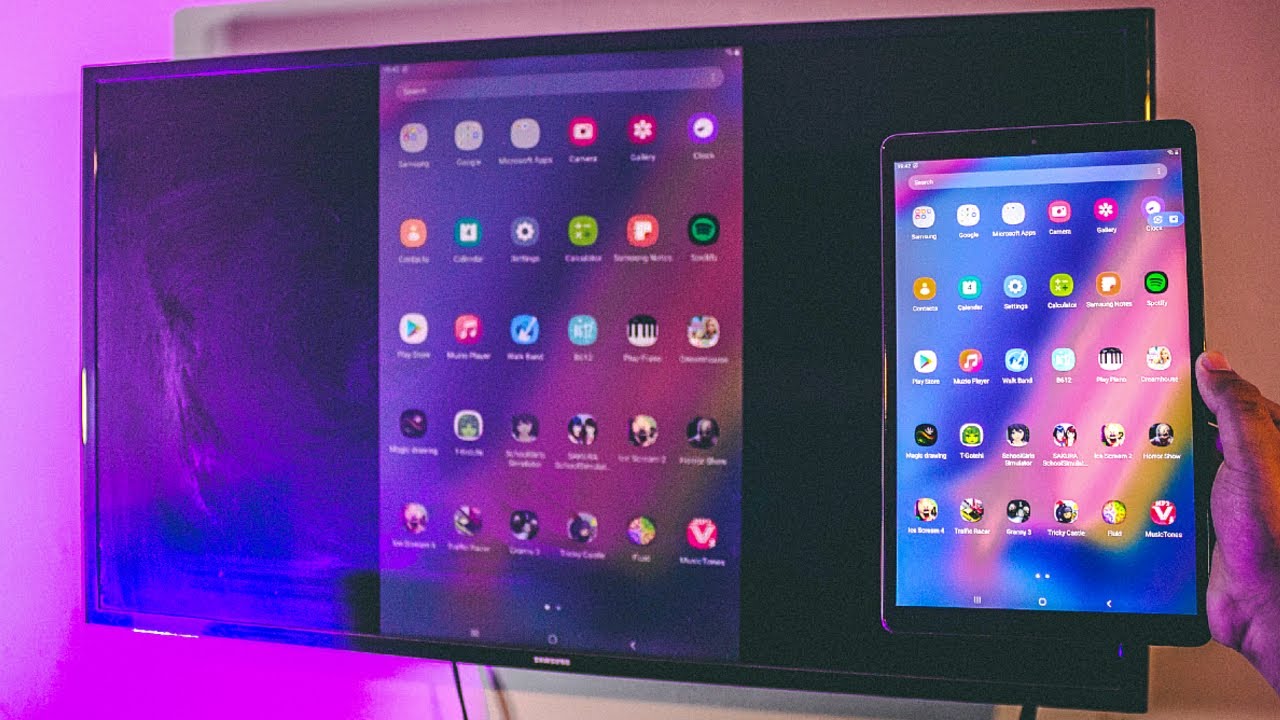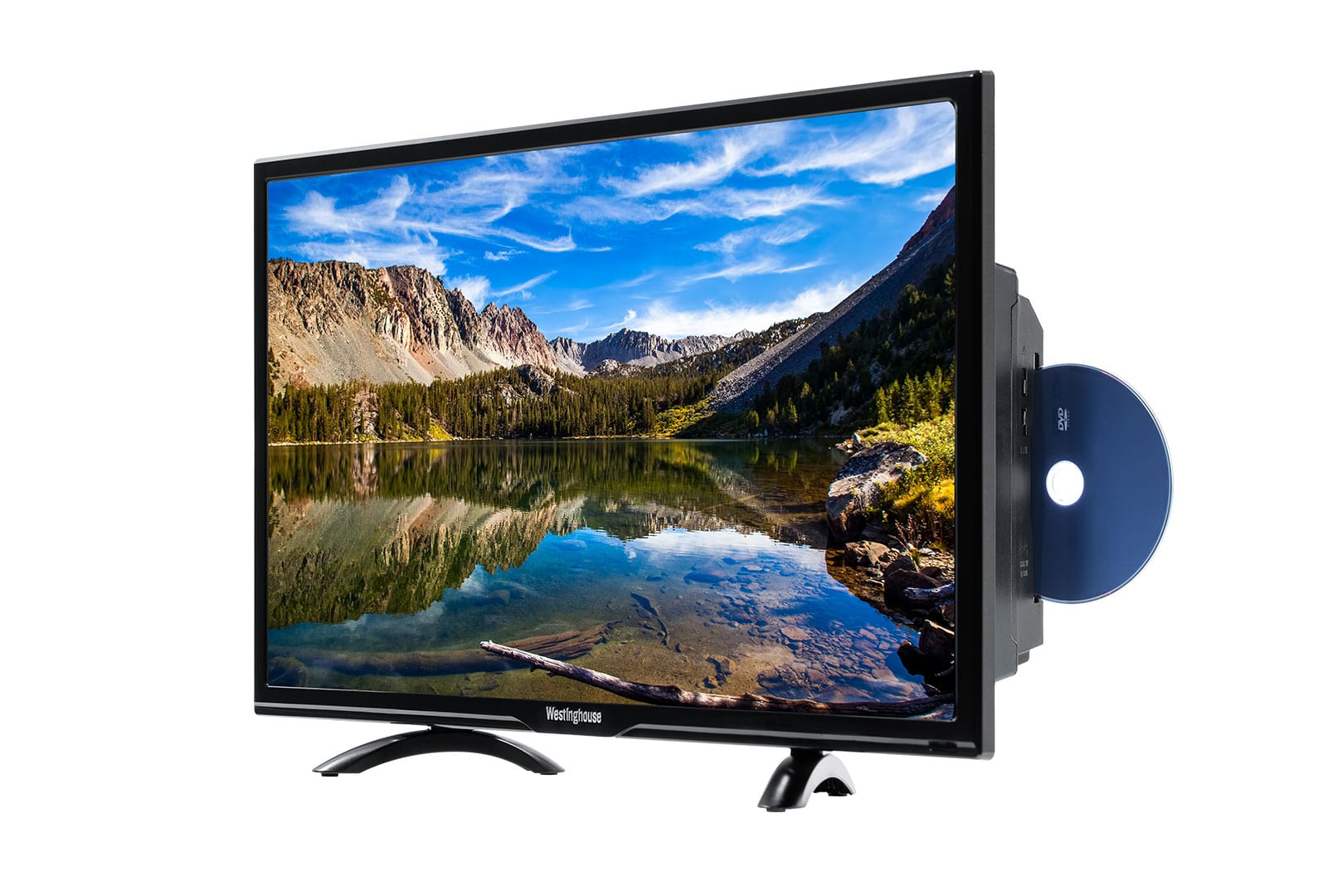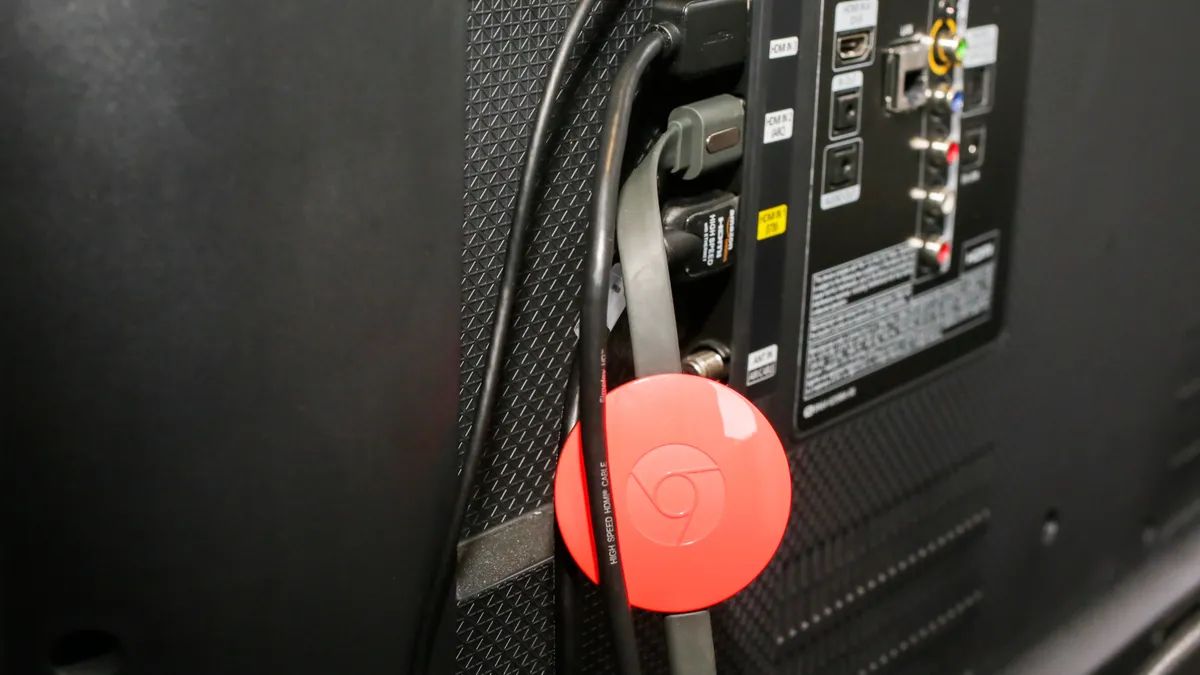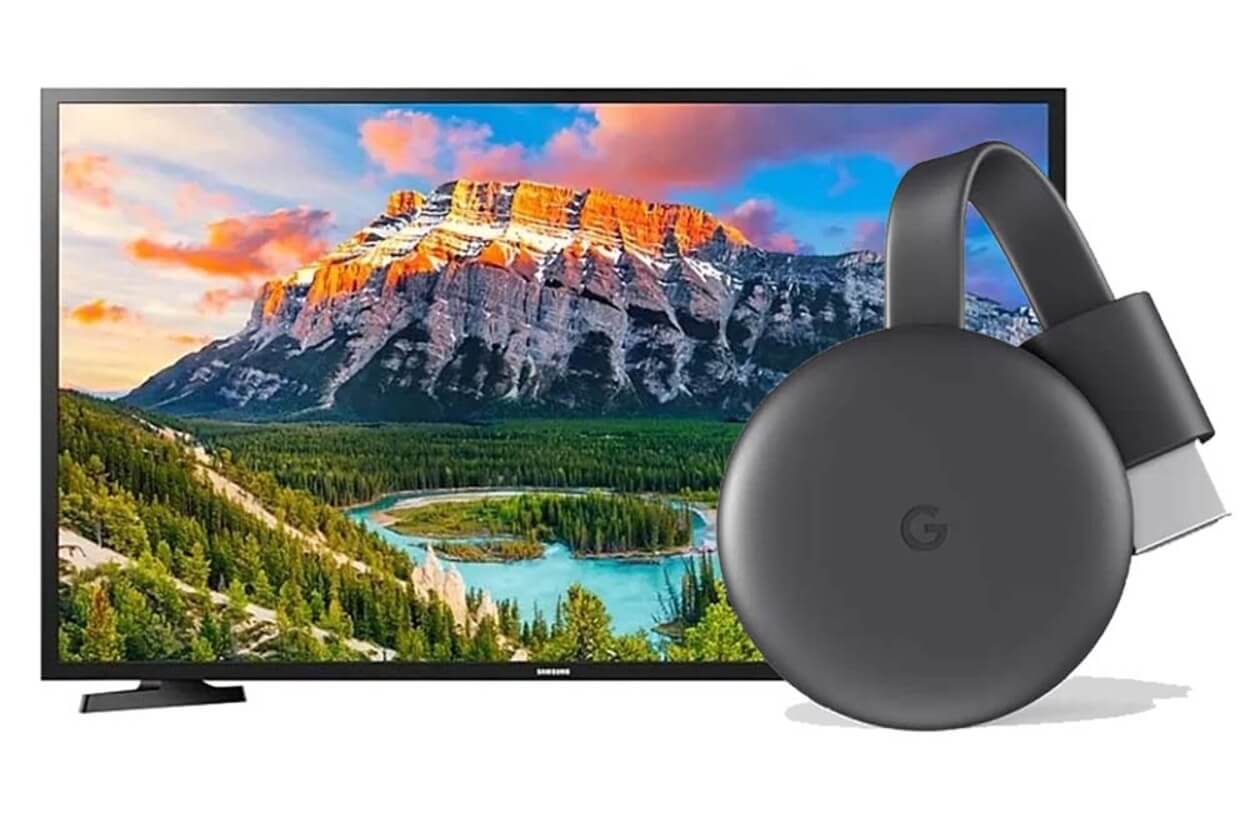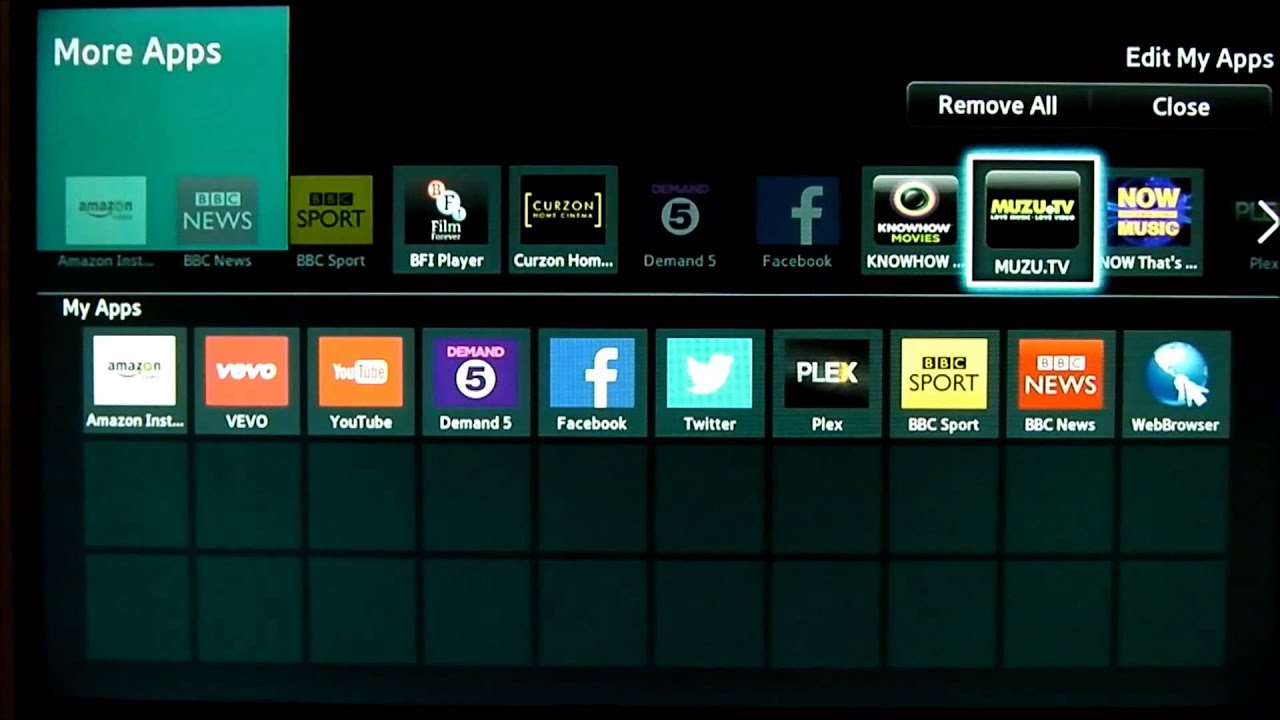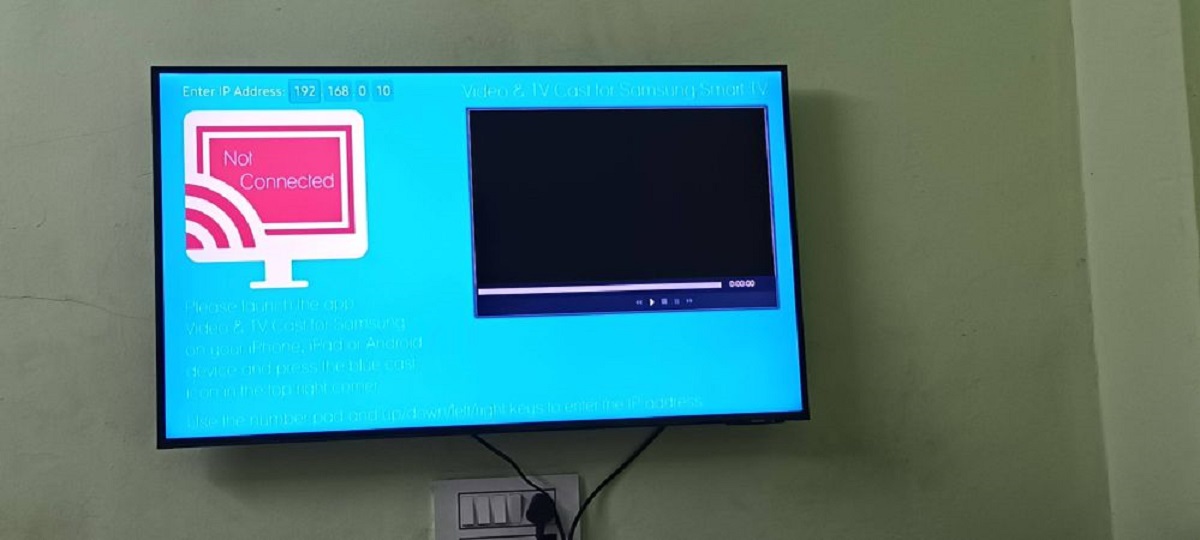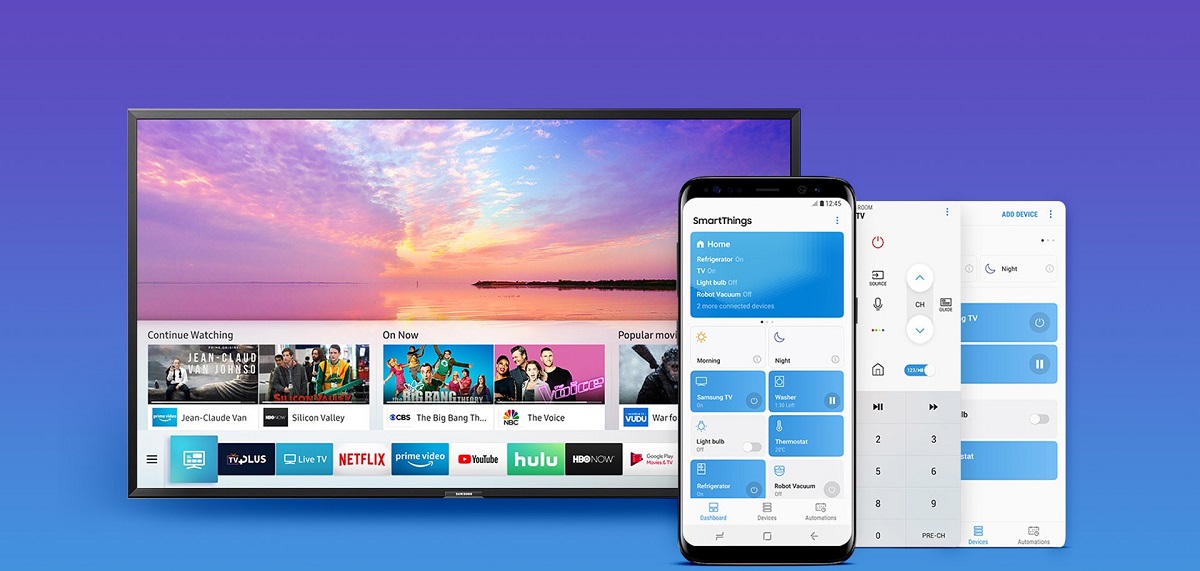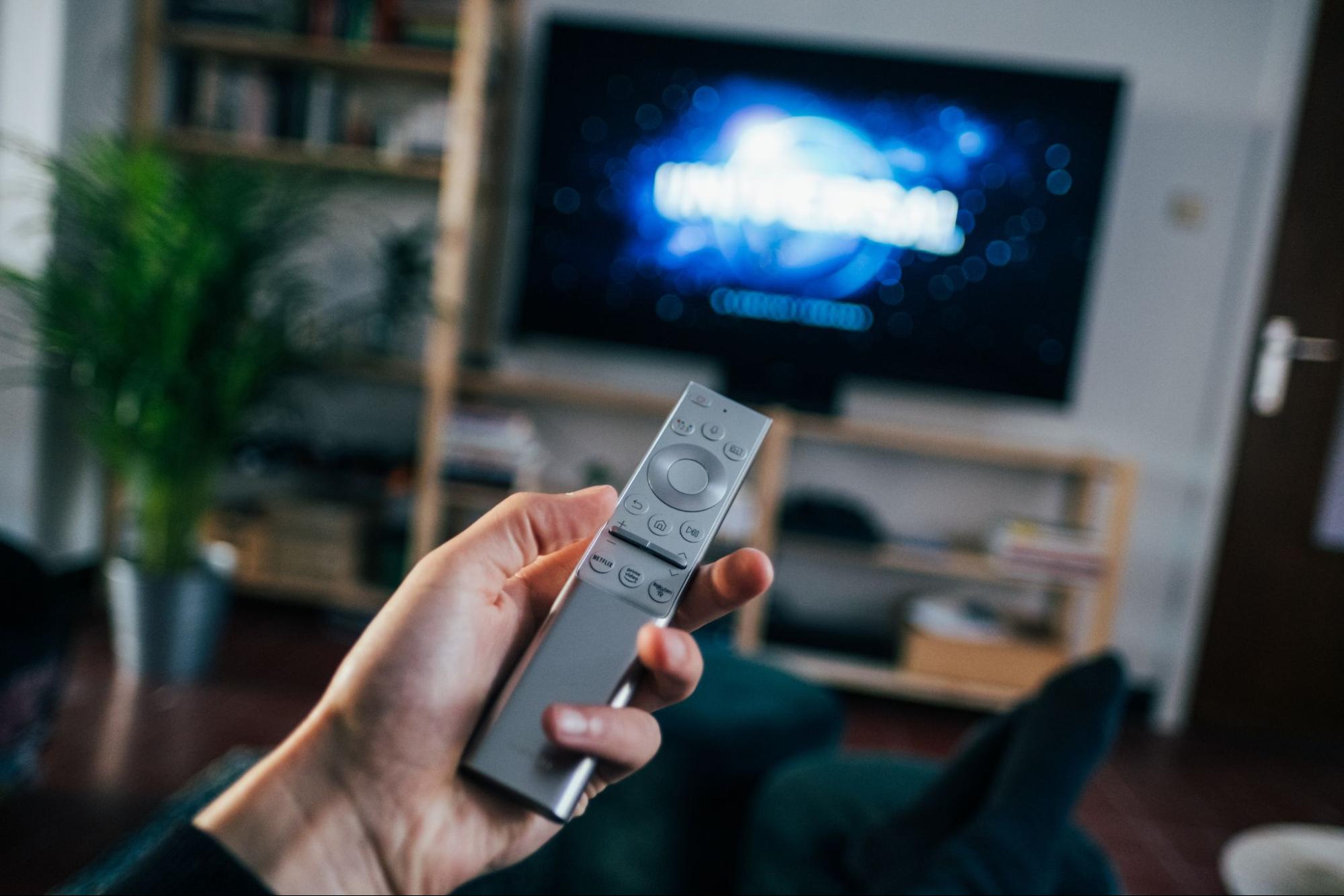Introduction
Are you looking to cast your Samsung tablet screen onto your TV? Whether you want to share photos, videos, or play games on a bigger screen, casting from your Samsung tablet to your TV is a convenient and easy way to enjoy your content. In this guide, we will walk you through the step-by-step process of casting from your Samsung tablet to your TV.
With advancements in technology, screen mirroring has become a popular feature in many smart devices, including Samsung tablets. By connecting your tablet and TV wirelessly, you can mirror your tablet’s screen and enjoy your favorite apps, movies, and more on a larger display. Before we delve into the steps, it’s important to ensure compatibility and have a Wi-Fi network set up for a seamless casting experience.
So, if you’re ready to take your entertainment to the next level, let’s dive into the process of casting from your Samsung tablet to your TV.
Step 1: Check Compatibility
Before you begin casting from your Samsung tablet to your TV, it’s crucial to ensure compatibility between your devices. Not all Samsung tablets support screen mirroring, so it’s essential to check if your tablet has this feature. Additionally, make sure your TV also supports screen mirroring functionality.
To check if your Samsung tablet supports screen mirroring, go to the settings menu and look for the “Screen Mirroring” or “Smart View” option. If you can find this option, it means your tablet is compatible.
For compatibility with your TV, check if it has built-in Wi-Fi connectivity and supports screen mirroring or casting functionality. Most modern smart TVs come with these features, but it’s always a good idea to consult the user manual or check the manufacturer’s website for confirmation.
If both your Samsung tablet and TV support screen mirroring, you’re ready to proceed to the next step. However, if your tablet or TV doesn’t support this feature, don’t worry. There are alternative methods, such as using a casting device like Chromecast, to wirelessly connect your tablet to your TV.
Ensuring compatibility between your Samsung tablet and TV will lay the foundation for a successful casting experience. So, take a moment to confirm that both devices have the necessary capabilities before moving on.
Step 2: Connect Your Tablet and TV to the Same Wi-Fi Network
In order to successfully cast from your Samsung tablet to your TV, both devices need to be connected to the same Wi-Fi network. This is important as it allows for seamless communication between the tablet and the TV.
To connect your tablet to a Wi-Fi network, follow these steps:
- Open the Settings app on your Samsung tablet.
- Scroll down and tap on “Connections.”
- Select “Wi-Fi” and toggle the switch to turn it on.
- A list of available Wi-Fi networks will appear. Choose your preferred network and enter the password if required.
- Once connected, you will see a Wi-Fi icon at the top of your tablet’s screen, indicating that you are connected to the network.
Similarly, ensure that your TV is connected to the same Wi-Fi network. The process may differ depending on the TV model, but generally, you can follow these steps:
- Using your TV remote, press the “Menu” button.
- Navigate to the “Network” or “Settings” section.
- Choose “Wireless” or “Wi-Fi” and select your network from the displayed list.
- If prompted, enter the Wi-Fi password to establish the connection.
- Once connected, your TV will indicate that it is connected to the network.
Remember, it is essential that both your Samsung tablet and TV are connected to the same Wi-Fi network. This will enable them to communicate with each other and facilitate the casting process seamlessly.
Step 3: Enable Screen Mirroring on Your Samsung Tablet
In order to cast your Samsung tablet screen to your TV, you need to enable the screen mirroring feature on your tablet. This feature may be called “Smart View” or “Screen Mirroring” depending on your tablet model and software version. Here’s how you can enable screen mirroring:
- Open the Settings app on your Samsung tablet.
- Scroll down and tap on “Connections.”
- Select “Screen Mirroring” or “Smart View” from the list of options.
- If the feature is turned off, toggle the switch to enable it.
Once enabled, your tablet is ready to connect to your TV for screen mirroring. Keep in mind that the steps to enable screen mirroring may vary slightly depending on your tablet’s software version. If you’re unable to find the “Screen Mirroring” or “Smart View” option, consult your tablet’s user manual or search for specific instructions online.
Now that you’ve enabled screen mirroring on your Samsung tablet, you can proceed to the next step to initiate the casting process.
Step 4: Open the Notification Panel on Your Tablet
To cast your Samsung tablet screen to your TV, you will need to access the notification panel. The notification panel contains shortcuts and quick settings for various features on your tablet, including screen mirroring. Here’s how you can open the notification panel:
- Swipe down from the top of the screen with two fingers or from the top-right corner of the screen with one finger.
- This action will reveal the notification panel, which displays notifications from various apps and system settings.
- Take a moment to familiarize yourself with the contents of the notification panel. You’ll notice important information such as battery levels, WiFi connection status, and more.
Now that you have access to the notification panel, you’re one step closer to casting your screen to your TV. Continue to the next step for the actual screen mirroring process.
Step 5: Tap the Screen Mirroring Button
Once you have opened the notification panel on your Samsung tablet, it’s time to tap the Screen Mirroring button. This button enables your tablet to scan for available devices for screen mirroring. Here’s how you can find and tap the Screen Mirroring button:
- In the notification panel, look for the Screen Mirroring or Smart View icon. It may be represented by a rectangle with a triangle at the bottom.
- Tap on the Screen Mirroring or Smart View icon to initiate the scanning process.
- Your tablet will start searching for nearby devices that support screen mirroring.
- Wait for a moment while your tablet discovers the available devices.
- A list of detected devices, including your TV, should appear on the screen.
Note that the appearance and location of the Screen Mirroring or Smart View button may vary depending on your tablet’s software version. If you cannot locate the button in the notification panel, consult your tablet’s user manual or search online for specific instructions.
Now that you have tapped the Screen Mirroring button and your tablet has detected available devices, proceed to the next step to select your TV for screen mirroring.
Step 6: Select Your TV from the List of Available Devices
After tapping the Screen Mirroring button on your Samsung tablet, a list of available devices that support screen mirroring will appear. This list will include your TV and any other compatible devices within range. To proceed with the casting process, follow these steps:
- From the list of available devices, locate and select your TV. The name of your TV should be displayed.
- If prompted, enter the PIN or password required to establish a secure connection. This step may vary depending on your TV’s settings.
- Wait for a few moments while your Samsung tablet establishes a connection with your TV.
- Once the connection is established, your tablet’s screen will be mirrored on your TV. You should see the same content displayed on both devices.
If you are unable to find your TV in the list of available devices, ensure that your TV is powered on, connected to the same Wi-Fi network as your tablet, and supports screen mirroring. Additionally, check if your tablet and TV are both in range of each other and within the connectivity range of your Wi-Fi network.
Now that you have successfully selected your TV, you can move on to the next step to start casting from your Samsung tablet to your TV.
Step 7: Start Casting from Your Tablet to the TV
Now that you have established a connection between your Samsung tablet and your TV, it’s time to start casting and enjoy your favorite content on the big screen. Here’s how you can begin casting from your tablet to the TV:
- Open the app or content that you want to cast to your TV on your Samsung tablet. It can be a video streaming app, a photo gallery, a game, or any other compatible content.
- As you play or view the content on your tablet, it should automatically be mirrored on the TV screen. You will see your tablet’s screen replicated on the TV, allowing everyone to see and enjoy the content.
- Use your tablet as you normally would to control and interact with the content. You can navigate, pause, or adjust settings directly from your tablet while viewing the content on the TV.
It’s important to note that while casting, the performance and quality of your content may be influenced by various factors such as Wi-Fi signal strength, network congestion, and the specifications of your devices. If you experience any lag or buffering issues, try moving closer to the Wi-Fi router, ensuring a clear line of sight between your tablet and the TV, or reducing network activity from other devices connected to the same network.
Now that you have started casting from your Samsung tablet to your TV, you can sit back, relax, and enjoy your content on the larger and more immersive TV screen.
Step 8: Adjust Settings and Enjoy Your Content on the Big Screen
Now that you have successfully cast your Samsung tablet screen to your TV, you can fine-tune the settings and enhance your viewing experience. Here are a few settings you can adjust:
- Display Settings: Depending on your TV, you may have options to adjust the picture mode, brightness, contrast, and other display settings to optimize the visual quality of the content.
- Audio Settings: Explore the audio options on your TV to adjust the volume, sound mode, equalizer settings, and other audio-related features for a more immersive viewing experience.
- Full-Screen Mode: Some apps or videos may not automatically go into full-screen mode when cast to the TV. Look for the full-screen option within the specific app or video player to maximize the screen real estate.
- Orientation Lock: If you prefer to keep your tablet’s screen at a specific orientation, consider enabling the orientation lock on your tablet to prevent accidental rotation while casting.
- Additional Features: Depending on your specific TV model and software, you may have additional features such as subtitle settings, audio output selection, or smart TV functionalities. Take some time to explore and customize these options based on your preferences.
By adjusting these settings, you can create a personalized and optimized viewing experience on the big screen. Experiment with different settings to find the perfect balance that enhances your content and enjoyment.
Now that you have adjusted the settings, sit back, relax, and enjoy your favorite movies, photos, games, or any other content on the larger and more immersive TV screen.
Step 9: Ending the Casting Session
When you’re finished with your casting session from the Samsung tablet to your TV, it’s important to properly end the session to ensure a smooth transition and conserve battery life. Here’s how you can end the casting session:
- On your Samsung tablet, open the notification panel by swiping down from the top of the screen with two fingers or from the top-right corner of the screen with one finger.
- Look for the Screen Mirroring or Smart View icon in the notification panel.
- Tap on the Screen Mirroring or Smart View icon to access the screen mirroring options.
- From the screen mirroring options, select “Disconnect” or a similar option to end the casting session.
Alternatively, you can also go to the settings menu of your Samsung tablet and navigate to the Screen Mirroring or Smart View section to disconnect from the TV.
Once you have disconnected the casting session, the connection between your tablet and TV will be severed, and the content will no longer be mirrored on the TV screen. Your tablet will return to its normal display mode.
Ending the casting session not only ensures that you have full control over your tablet’s display, but it also conserves battery life by preventing unnecessary screen mirroring and data transmission.
With that, you have successfully learned how to end the casting session and assert full control over your Samsung tablet’s display.
Conclusion
Casting from your Samsung tablet to your TV is a convenient and enjoyable way to share and enjoy content on a larger screen. By following the step-by-step process outlined in this guide, you can easily cast your tablet’s screen onto your TV and immerse yourself in a more engaging viewing experience.
From checking compatibility to connecting your devices to the same Wi-Fi network, enabling screen mirroring, and selecting your TV, each step plays a crucial role in ensuring a successful casting session. Additionally, adjusting settings and properly ending the casting session are important considerations to enhance your viewing experience and conserve battery life.
Remember to check the compatibility of your Samsung tablet and TV, as well as their Wi-Fi connectivity, before initiating the casting process. Once connected, you can enjoy a wide range of content, including apps, videos, photos, and games, on the big screen.
Whether you’re hosting a movie night, sharing memorable photos with friends and family, or simply enjoying your favorite apps and games on a larger display, casting from your Samsung tablet to your TV opens up a world of possibilities for entertainment.
So, grab your Samsung tablet, follow the steps outlined in this guide, and start casting your screen to your TV for an enhanced and immersive viewing experience.







